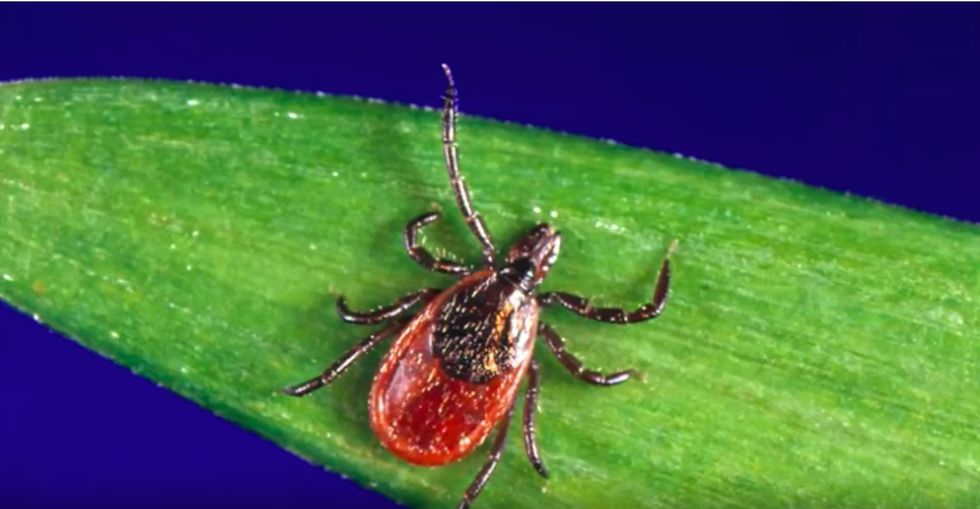
The Asian longhorned tick is causing concern among health officials as it spreads across the Eastern Seaboard of the United States. (Image source: YouTube screenshot)

Most humans have some fear — or at least healthy wariness — of spiders. However, an invasive species of ticks — the spider's deadlier, disease-carrying cousin — may soon be a much larger cause for concern in the United States.
Officials in eight eastern states (and counting) have spotted the Asian longhorned tick, an invasive species to the United States that carries numerous potentially fatal diseases and multiplies at a terrifying rate.
It's not clear how the species first arrived in the United States, as it was first discovered on a sheep that had not traveled to Asia. However, according to the Independent, it has spread from livestock into some densely populated areas, including the New York City suburbs.
A number of reasons. First, it reproduces asexually and thus can generate hundreds or even thousands of fertile offspring in a shockingly short time. These ticks can swarm and kill an animal via exsanguination in a very short period of time.
Indeed, the first discovery of this tick species in the United States, as relayed by The Indpendent, sounded like something out of a horror movie:
Tadhgh Rainey, an entomologist at the public health department of Hunterdon County in New Jersey, was first to report the discovery of large numbers of the tick, in a paper published in May this year.
“All life stages were found on the sheep, which had no history of travel outside the country,” he said.
In a subsequent interview he said the owner came to his department with ticks on her hands and wrists.
“I thought she’d have a few,” Mr. Rainey said. “But she was covered in them, easily over 1,000 on her pants alone.”
As with all ticks, however, the main concern for humans is that ticks make excellent disease vectors for human illnesses. In Asia, these ticks carry deadly diseases, including oriental spotted fever, and a disease called severe fever with thrombocytopenia syndrome, or SFTS, which is fatal in up to 30 percent of all cases.
These ticks are also smaller than normal ticks, which makes them harder to detect until they have already latched on and begun to engorge, at which point they have already done the work of spreading whatever disease they may be carrying.
As of yet, none of the ticks that have been found in the United States have been carrying any human diseases at all. Health experts also say that concerns about exotic Asian diseases like oriental spotted fever and SFTS are likely overblown.
However, it is likely only a matter of time before the Asian longhorned tick becomes a disease vector for human diseases that are prevalent in the United States, like Lyme disease, Powassan virus, and anaplasmosis.
If you spot what you believe to be one of the Asian longhorned ticks, preserve it and contact your local health department, particularly if you live on or near the Eastern Seaboard.
Researchers caution that tick-borne illnesses on the whole are on the rise across the United States, even from tick species that are native to North America.
The main way ticks attach themselves to humans remains through household pets that regularly go outdoors. If you have a pet that spends part of its time inside and part outside, check them regularly for ticks and consider tick repellant treatments. Keeping pets out of tall grass and out from under trees (most ticks like to hide in one of these two places) will help.